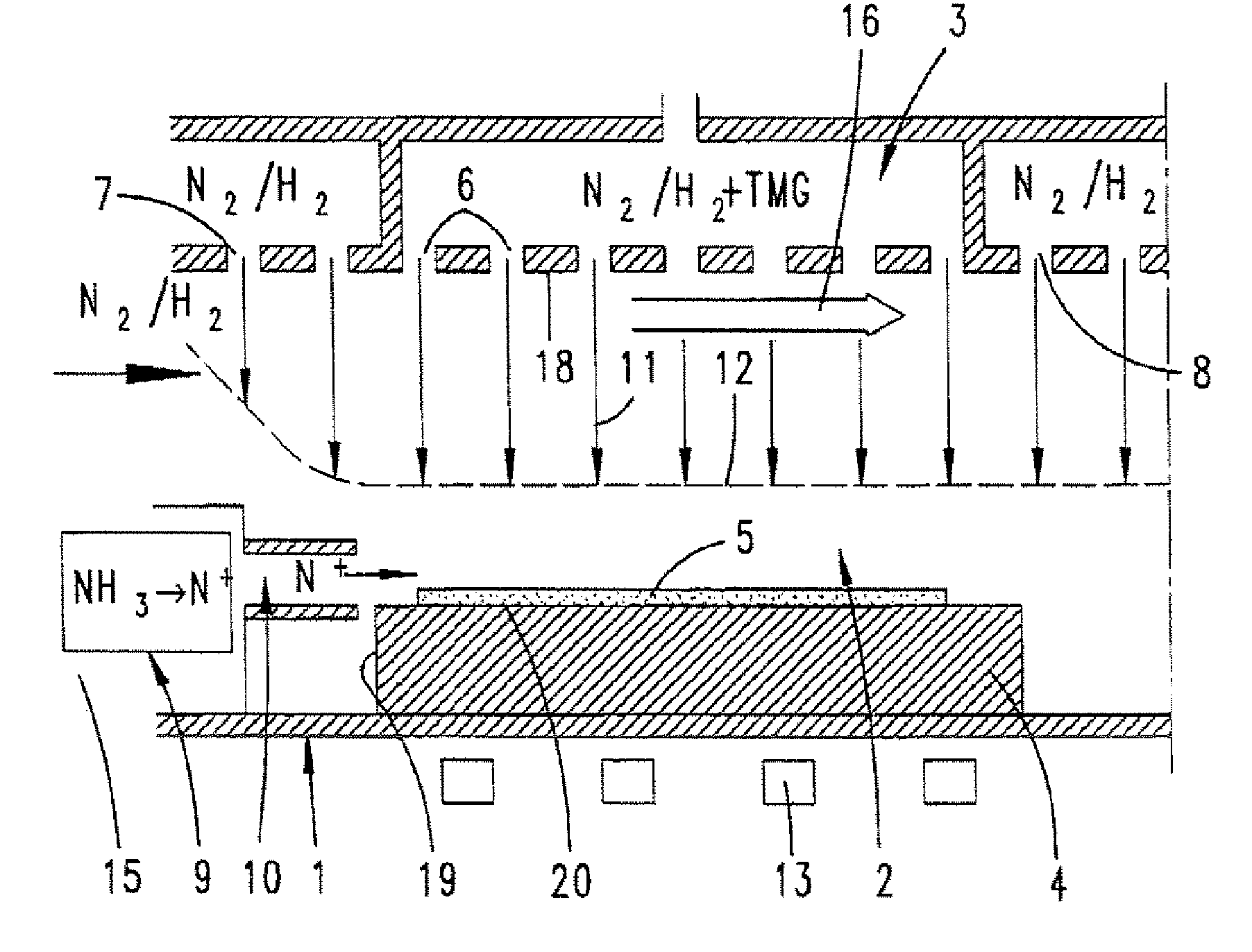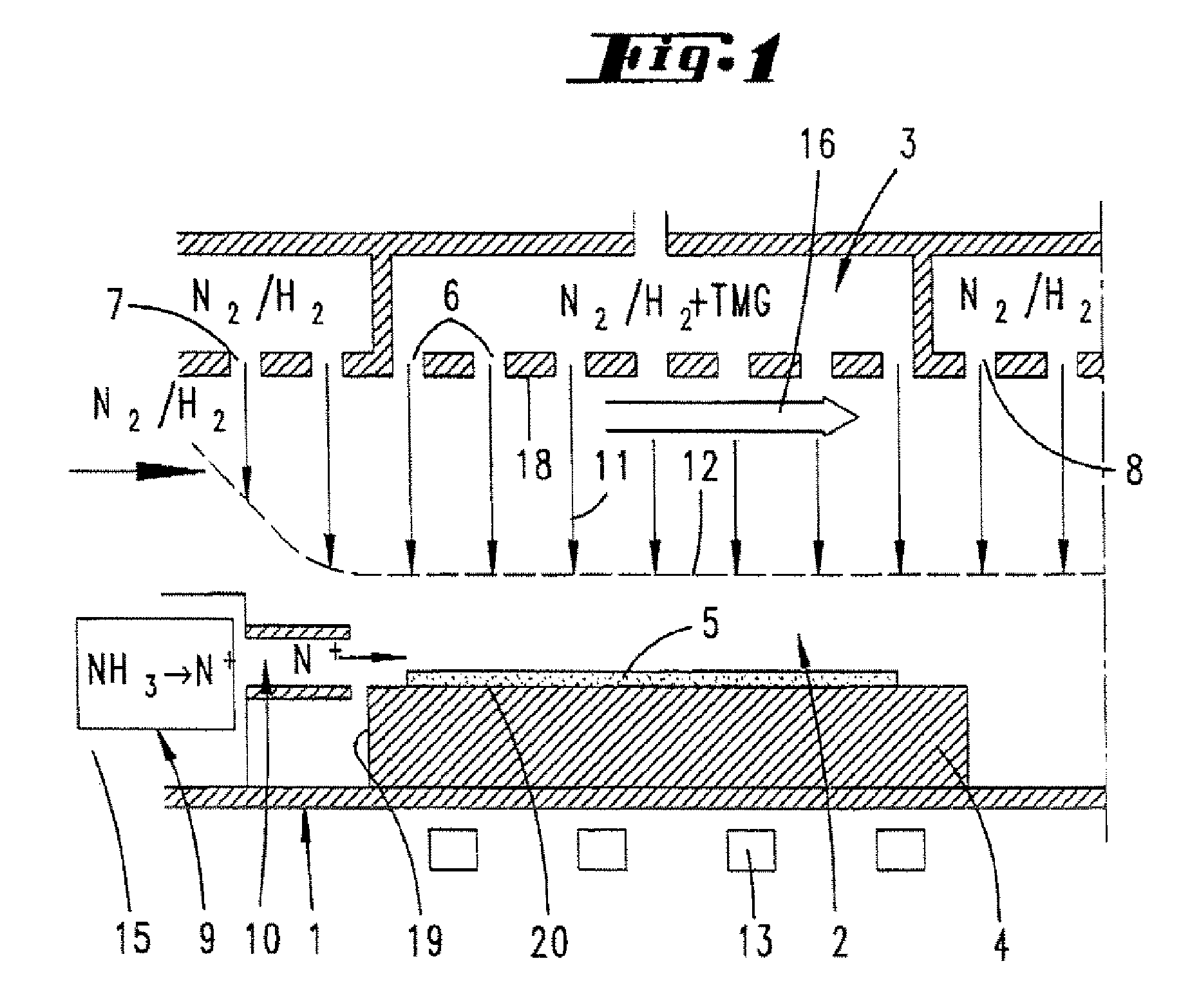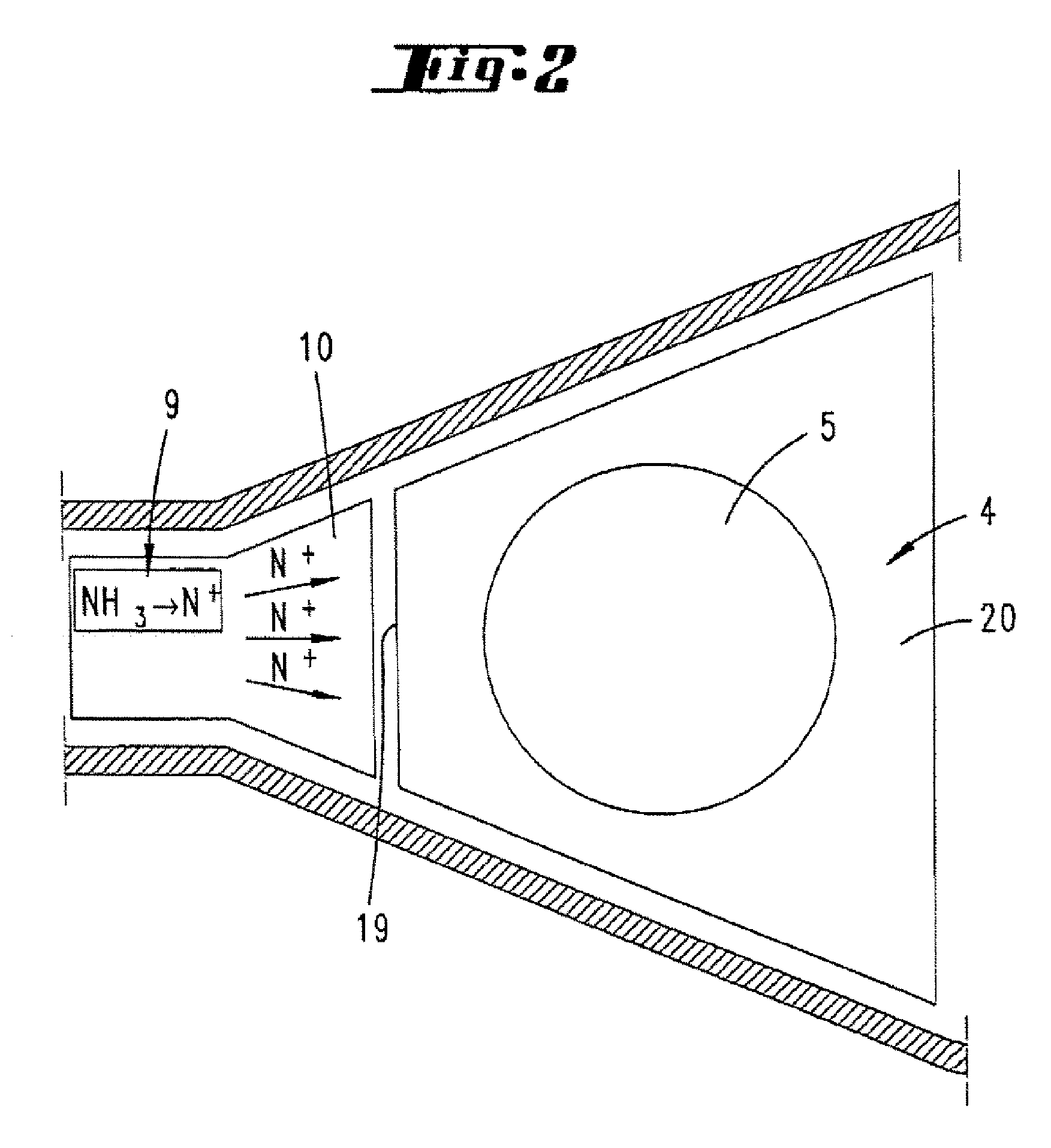Process And Apparatus For Depositing Semiconductor Layers Using Two Process Gases, One Of Which is Preconditioned
a technology of process gas and semiconductor layer, applied in the direction of electrical apparatus, chemical vapor deposition coating, coating, etc., can solve the problems of high consumption, high cost of process used to date, and low mass flow of carrier gas, so as to reduce the mass flow of hydride, the effect of low cost and reduced mass flow
- Summary
- Abstract
- Description
- Claims
- Application Information
AI Technical Summary
Benefits of technology
Problems solved by technology
Method used
Image
Examples
Embodiment Construction
[0024]The reactor 1 illustrated in FIG. 1 has a housing (not shown). Within the housing of the reactor 1 is a heating device 13 which can be used to heat a substrate holder 4 to process temperature. A substrate, on which a layer is to be deposited, is located on the substrate holder 4. It is also possible for there to be a multiplicity of substrates 5 on the substrate holder 4.
[0025]The process chamber 2 is located above the substrate holder 4. The process chamber 2 is delimited at the top by a gas inlet member 3. This gas inlet member 3 forms a gas exit surface 18, which extends parallel to the surface 20 of the substrate holder 4. Gas entry openings 6 are located in the gas exit surface 18 in known manner. These gas entry openings 6 are distributed over the gas exit surface 18 in such a manner that the gas jets which emerge from the gas entry openings 6 and enter the process chamber in the gas inflow direction form a uniform gas flow field in the direction of the substrate holder ...
PUM
| Property | Measurement | Unit |
|---|---|---|
| height | aaaaa | aaaaa |
| height | aaaaa | aaaaa |
| height | aaaaa | aaaaa |
Abstract
Description
Claims
Application Information
 Login to View More
Login to View More - R&D
- Intellectual Property
- Life Sciences
- Materials
- Tech Scout
- Unparalleled Data Quality
- Higher Quality Content
- 60% Fewer Hallucinations
Browse by: Latest US Patents, China's latest patents, Technical Efficacy Thesaurus, Application Domain, Technology Topic, Popular Technical Reports.
© 2025 PatSnap. All rights reserved.Legal|Privacy policy|Modern Slavery Act Transparency Statement|Sitemap|About US| Contact US: help@patsnap.com



